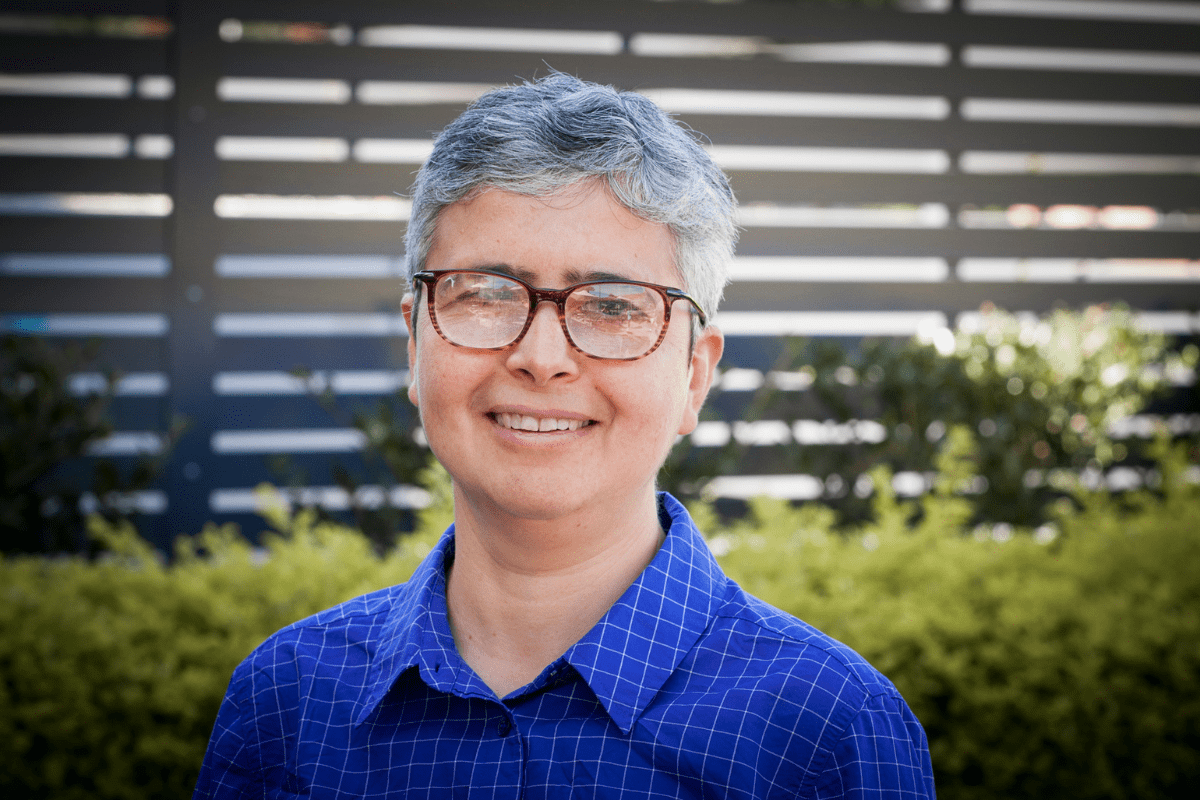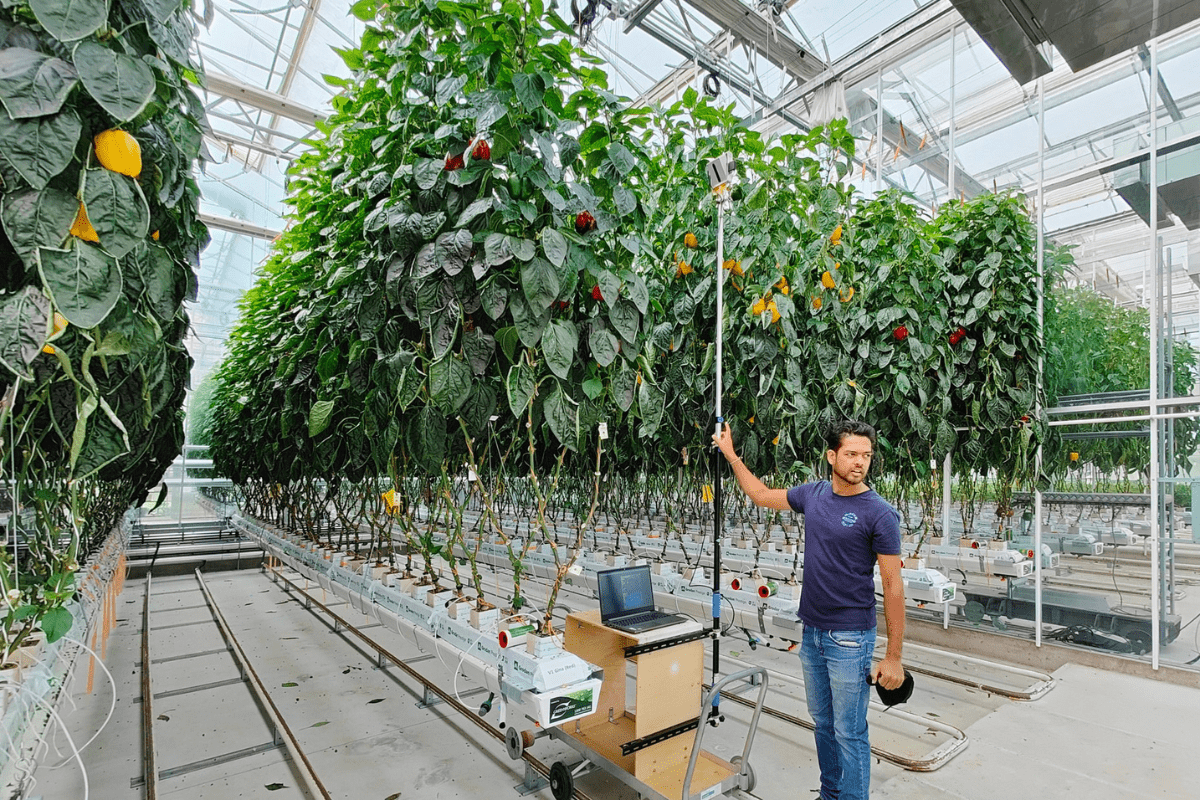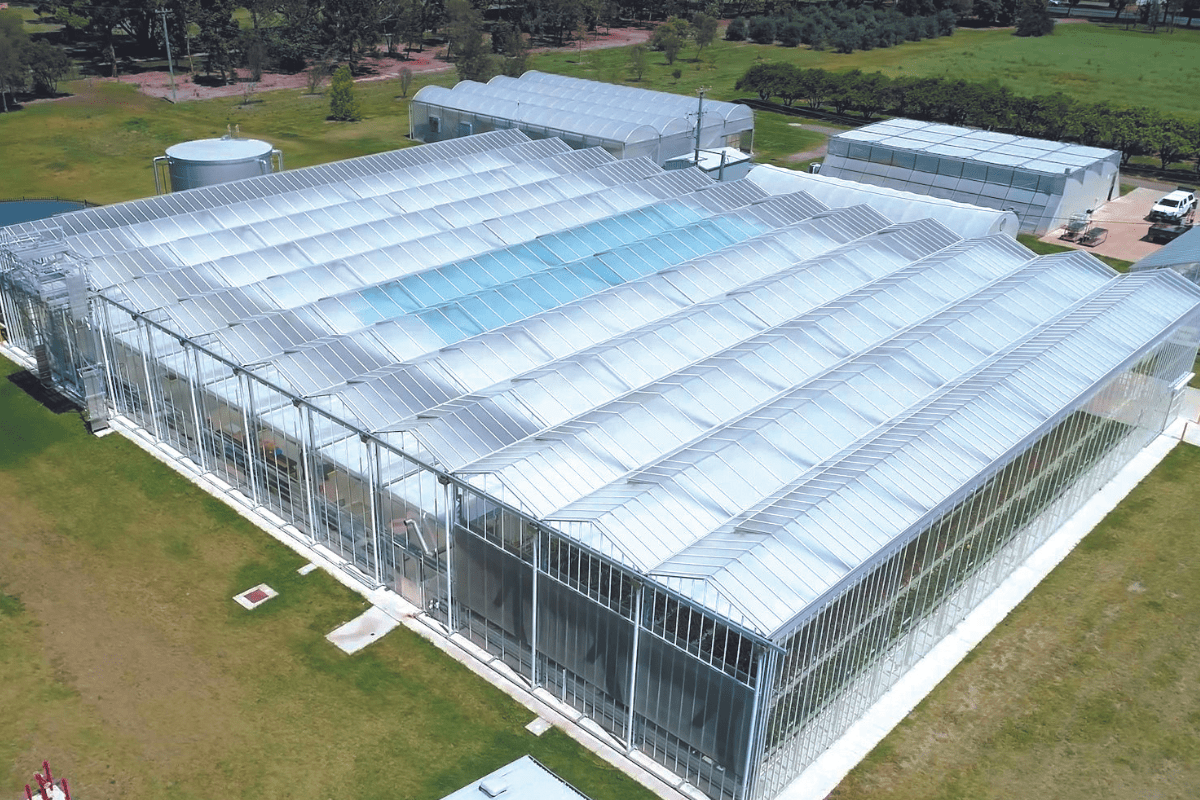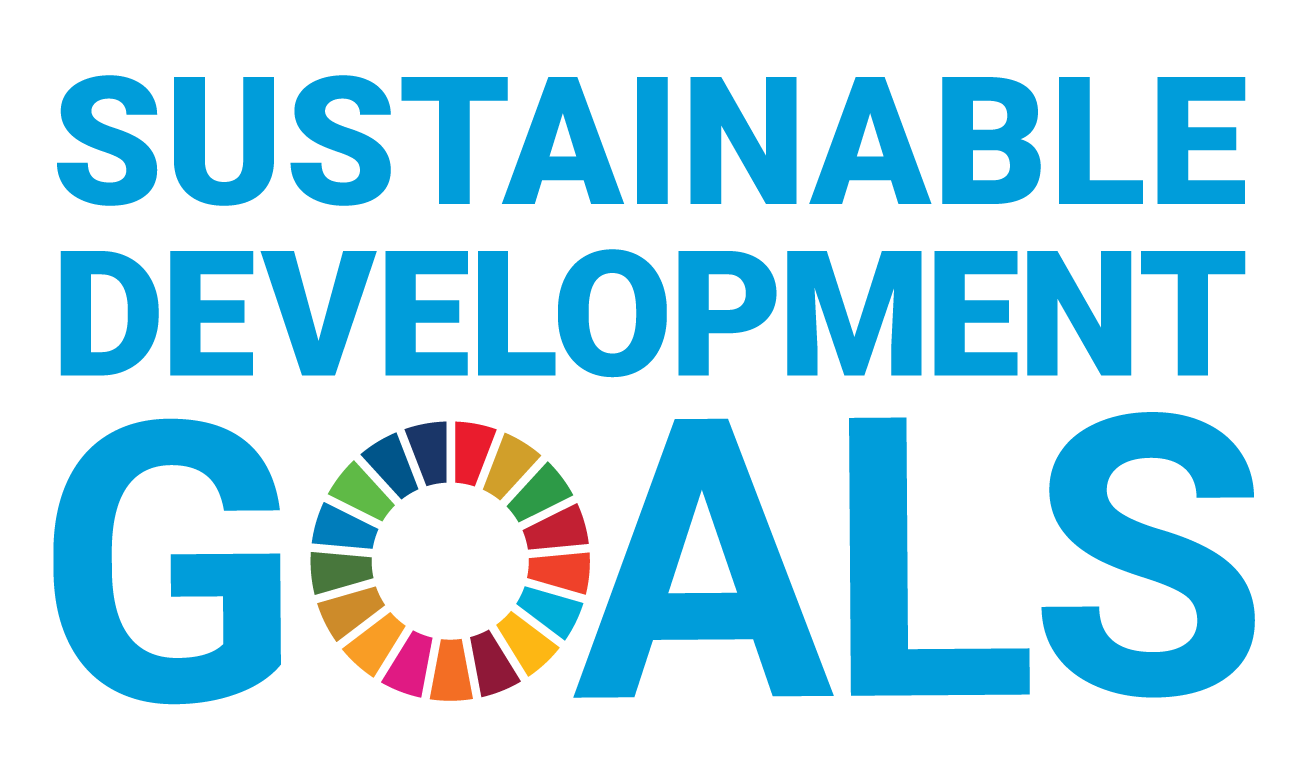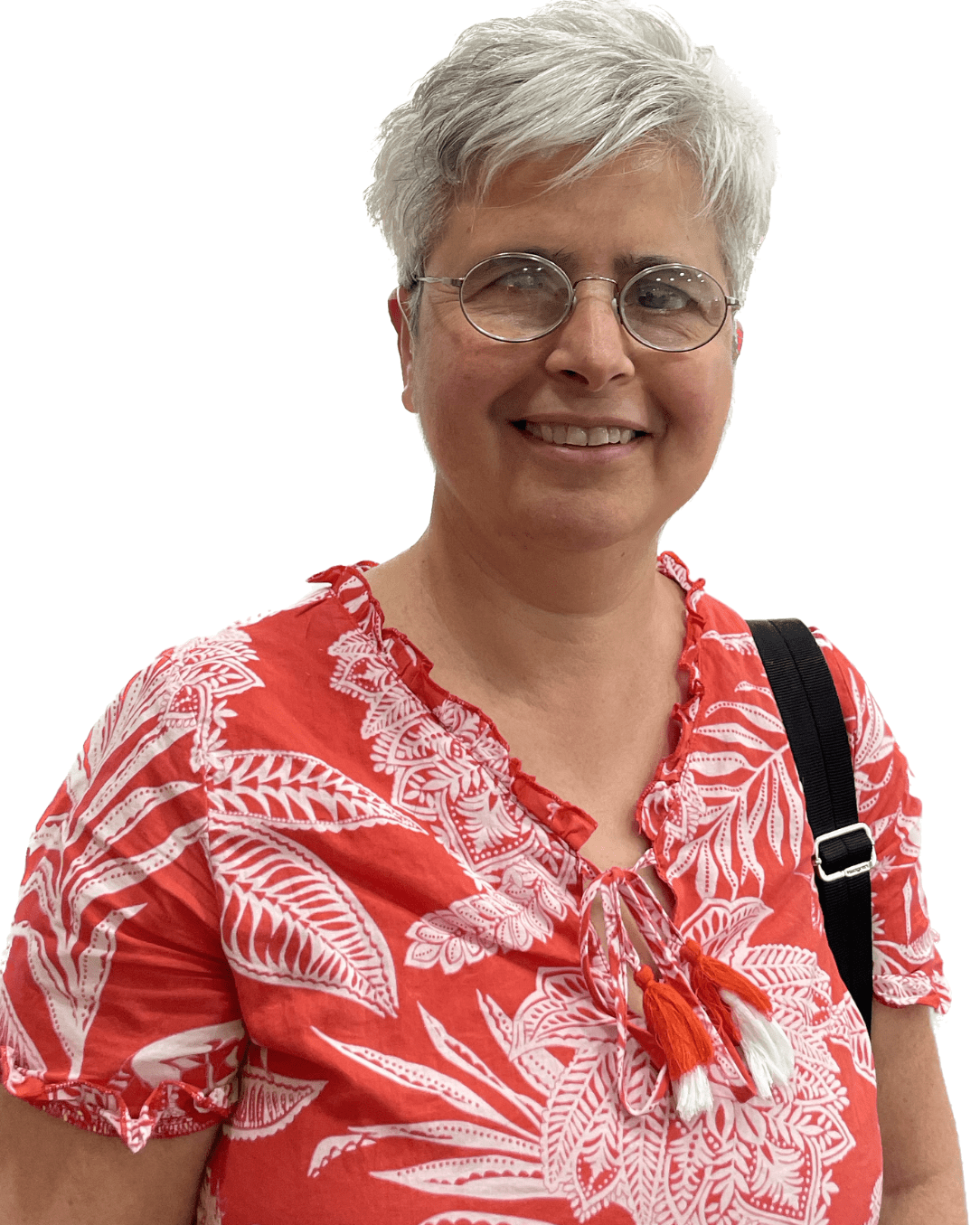You can search for courses, events, people, and anything else.
In the open air, the success of growing crops is reliant on many factors. In contrast, growing protected crops in sheltered environments such as greenhouses offers agriculturists much more control over factors such as light, water and nutrients.
"But you don’t want to go into these facilities a lot," says Professor Oula Ghannoum, a plant physiologist at Western Sydney University’s Hawkesbury Institute for the Environment. "You want to reduce human contact, because people can be vectors of crop infections." The other main challenge is that we have a shortage in skilled labour but some of these tasks can be done by machines and artificial intelligence.
Ghannoum leads a project called Automated Crop Monitoring for Protected Cropping Systems, which was launched in April 2023 by Australia’s Future Food Systems Cooperative Research Centre.
"We’re developing a non-invasive technique to monitor crop growth and health, as well as fruit quality and ripening," Ghannoum explains. In terms of the United Nations Sustainable Development Goals, this project ticks most of the boxes for efficiency, she says.
This technique relies on obtaining and analysing images. "We have to figure out how to take the images, but also how to analyse these images and turn them into biological information that can assist growers," Ghannoum explains.
Need to know
- Protected cropping can improve food yield and reliability.
- But humans may introduce infections while monitoring the crop.
- Robotic monitoring could help minimise human contact and thus crop infections.
The project comprises three parts: selecting the camera for imaging; developing robotics for enabling the camera to capture information throughout the growing facility; and data analysis.
"In the end, the product will be just a single unit," she says. That machine will consist of a series of cameras for visible-light and hyperspectral imaging, possibly a sensor to collect depth and thermal data, and the robotics that move the cameras to capture the information required.
According to Ghannoum, the tricky part will be analysing the data. This will require creating 3D reconstructions of the crop plants from images and combining them with environmental data from the facility. From this, the scientists will determine a plant’s health, growth and production level, and also decide whether the plants need attention, such as more nutrients.
So far, the team’s manual prototype collects images, and the scientists can measure growth rate. "The next steps are to determine the fruit volume, leaf size and crop yield," Ghannoum says.
From the start, this project has been attracting attention from researchers and agriculturists. "We’re excited to develop our vertical farming systems, including cost-effective imaging and sensing solutions for real-time monitoring of crop growth, nutrition, health, yield and quality of our leafy green produce," says Wayne Ford, co-founder and chief executive officer at Vertical Patch, an urban agricultural company in Smithfield, which is an industry partner in the project and has several controlled/protected-crop farms in Sydney. "Under Oula’s guidance and direction, this project will bring further research and innovation to our vertical farming systems."
Meet the Academic | Professor Oula Ghannoum
Oula Ghannoum is the Professor of Plant Science at the Hawkesbury Institute for the Environment and Discipline Lead for Biological Sciences at Western Sydney University. She was a Node Leader within the Australian Research Council (ARC) Centre of Excellence for Translational Photosynthesis (2004-2020) and is currently a Project Leader within the Future Food Systems Cooperative Research Centre (2009-2028).
Oula holds a BSc (Honours) in Plant Biochemistry from the University of New South Wales, and a PhD in Plant Physiology from Western Sydney University. She was awarded a prestigious ARC Postdoctoral Fellowship at the Australian National University, before returning to Western where she first obtained her tenure as a Senior Lecturer in 2009.
Oula’s research career addresses the twin challenges of ‘Food Security’ and ‘Climate Change’. Her research aims at discovering novel ways to sustainably improve crop yield by enhancing water use efficiency and manipulating sugar perception in plants. She is also leading a multi-disciplinary project aimed at developing imaging and artificial intelligence solutions for crop monitor in protected facilities.
Oula has won more than $20M in research funding and has published >100 scientific articles. She presented her work at numerous national and international conferences. Her overall impact is demonstrated by a lifelong h-index of 43 and 7,772 citations according to Google Scholar.
In addition to her academic endeavours, Oula is passionate about creative writing and storytelling, and is involved in a multi-media project on exploring various aspects of Arab migration to Australia.
Credit
Future-Makers is published for Western Sydney University by Nature Research Custom Media, part of Springer Nature.
© onurdongel/iStock/Getty
© Sally Tsoutas
© Daniel Boud
© Future Food Systems CRC

